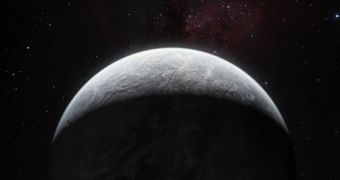The fact that life exists in the Milky Way is plain as day. Now the thorniest issue is establishing how to find it. Astronomers say that limiting our search for our origins to this planet, the solar system or whatever exoplanets we can see exclusively would be a mistake.
They argue that there are two primary ways in which life may have emerged. Either it developed here, from a string of accidents and coincidences that led to complex lifeforms, or it appeared elsewhere in the galaxy, and was brought here on comets and meteorites – a theory called panspermia.
In light of the most recent studies on the issue, the second option appears to be the most likely. Molecules that could very well be organic were detected in space rocks making their way through the atmosphere, and bacteria have already been proven capable to withstand ejection into the atmosphere.
If that is the case, then indeed the most fundamental question of human existence is not answered, simply shifted. If life came here from elsewhere, what is its source? Are there any other planets where life's seeds found a good place to develop, and managed to evolve into something more?
Our best starting point in trying to answer this question is to start looking on Earth-like planets, since it's obvious they have an edge in allowing life to thrive. These objects need to be located in their star's habitable zone before researchers even begin to assess their likelihood of supporting life.
This distance ensures a range of temperatures that favors the existence of liquid water on the planet's surface. It also favors an atmospheric composition that may not be too different from Earth's. If that is the case, then maybe a carbon cycle could also develop. These are all essential conditions for life.
One of the main directions of research at this point is establishing whether the Milky Way as a galactic habitable zone (GHZ), an area where conditions other than the ones mentioned above favor the development of life more than in other parts of the galaxy, Space reports.
In more recent times, astronomers have proposed that the GHZ could be located within the inner sector of the Milky Way, even if that may seem counterintuitive at first. Objects in that region are bathed in radiation and are at high risk of being impacted by other celestial bodies in the vicinity.
But the area meets three conditions required for life as well – relatively-high supernova rates, high metallicity and prolonged lifespans, of billions of years, needed for life to develop. Further studies will demonstrate whether this proposal holds any merit.

 14 DAY TRIAL //
14 DAY TRIAL //